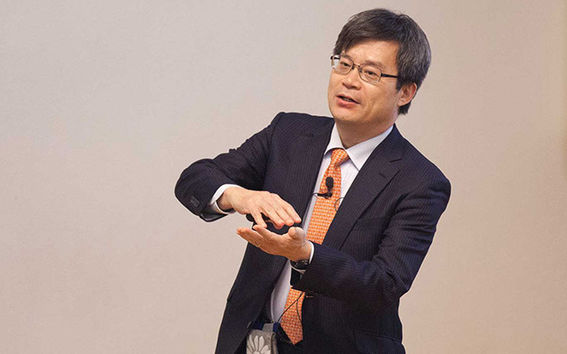Nobel laureate wants to give students space to discover

Winning a Nobel Prize last autumn wreaked havoc on Hiroshi Amano's calendar at one fell swoop. Hundreds of lecture invitations and requests for interviews, thousands of kilometres in the air, and dozens of festive events - is there any time left for research?
'I have solved the challenge by giving the students in my research group freedom', answered a cheerful Amano to a lecture hall packed full of Aalto University students, personnel, and visitors who had gathered to hear the story on the origin of LEDs, which have revolutionised illumination.
'I made my own breakthroughs very independently, without the supervision of a professor. I had the idea that I could change the world with the help of blue LEDs but I had no idea what kind of a challenge I faced', he said.
Amano's role was especially significant in the 1980s in the development of production methods of gallium nitride, a semiconductor used in blue LEDs. Now LEDs are becoming ubiquitous, and it is no wonder. LEDs are far superior to incandescent lights and fluorescent tubes both in duration and energy efficiency.
Are there any dreams left for the researcher who has won the world's most prestigious science prize?
'There are great challenges in the world that are linked with the environment, food, and energy. We still have much that needs to be done with the last one; the efficiency of illumination still needs to be improved. I hope that young people are so ambitious that they will come up with sources of light that are even better than LEDs.'
Aalto University professor Filip Tuomisto, who is collaborating with Amano, was please that the recent Nobel Prize winner came to lecture - appropriately in the International Year of Light. To the right of Amano is Tuija Pulkkinen, Vice President of Research and Innovation at Aalto University.
Photos Mikko Raskinen
Read more news

Get to know us: Associate Professor Maria Sammalkorpi
Sammalkorpi received her doctorate from Helsinki University of Technology 2004. After her defence, she has worked as a researcher at the Universities of Princeton, Yale and Aalto.
Aalto computer scientists in ICML 2024
Computer scientists in ICML 2024
Getting bacteria into line
Physicists use magnetic fields to manipulate bacterial behaviour